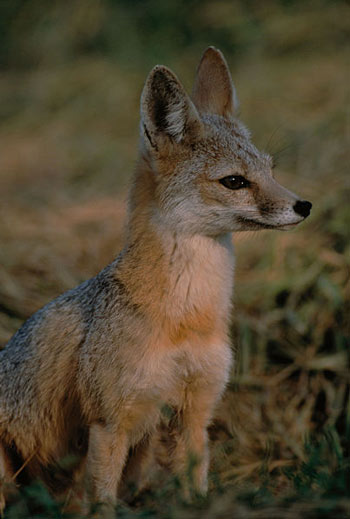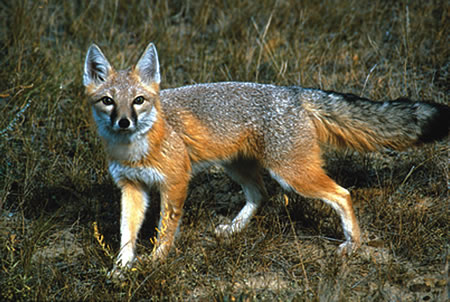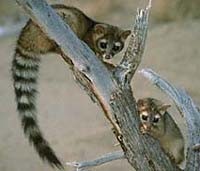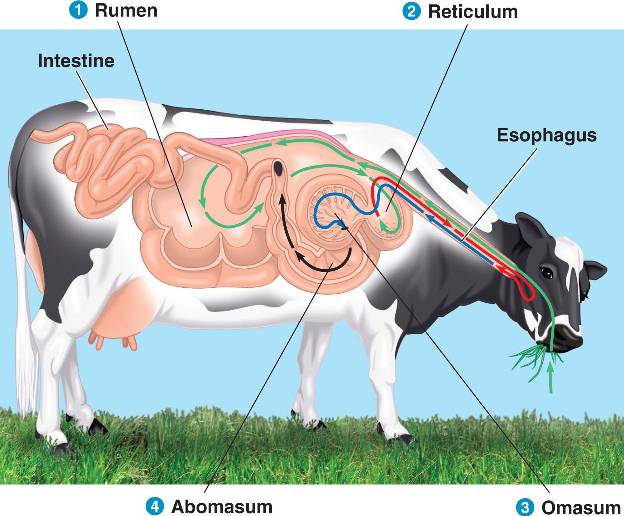I know we have skipped yet another week, but with Thanksgiving preps and crafting projects, we are working a jumbled schedule around here. I expect this to be true for the majority of December as well, so if you are following along, please plan to catch-up or resume the weeks with us after the New Year.
When we resume, we will learn about:
the fur-bearers and musk gland group
Bears, the kings of the forest lands
whales, dolphins, porpoises and manatees
fin-foots and kelp-dwellers (seals, walruses, and sea otters)
the burrowing life of shrews, moles, pocket gophers, chipmunks, ground squirrels, prairie dogs, marmots and armadillos)
Leafy Treetop dwellers (red tree mouse/red tree heather vole, pinon mouse, golden mouse, southern flying squirrel, red squirrel, gray squirrel, fox squirrel, marten, the fisher)
mammals of the flowing water (northern water shrew, mink, chocolate cottontail, marsh rabbit, muskrat, coypu, river otter, beaver)
desert dwellers (pocket mouse, kangaroo mouse, ord kangaroo rat, collared peccary)
mammals of the barren ground and polar seas (lemmings, arctic ground squirrels, arctic fox, ringed seal, narwhals, white whales, bowheads, musk ox)
We'll see you back here for Science Week lessons beginning on January 7th.
Friday, November 23, 2012
Monday, November 12, 2012
Science Week 15: Trailers and Climbers
This week covers animals that trail and climb.
Dogs, such as pointers, spaniels, retrievers and setters follow hunters into the field.
Terriers chase small game, such as foxes, badgers, and even rats.
Hounds sniff the trails of game and pursue them to their trees and burrows.
Greyhounds, wolfhounds, and deerhounds chase by sight, galloping swiftly after the prey and holding or crippling it until hunters arrive.
Bloodhounds are trained to find lost children or escaped criminals by tracking their movements.
Among the snow avalanches of the high Alps, Saint Bernard dogs have located buried travelers, and aided monks in rescue work, said to have aided in the rescue of over 2500 people over their years of use.
There is also a Newfoundland breed that is used to rescue shipwreck victims.
Collies and sheep dogs mover, or herd, livestock.
German Shepherds guide the blind, aid police officers, guard homes and businesses.
Several species of wild dogs live in the United States, 4 fox and 3 wolf species. Like cats, dogs have 4 toes on the hind foot and 5 on the front foot with the inside toe too high to show in their track. However, the footprints of the two animals are slightly different. Dogs' claws are more blunt, and cannot retract so they leave marks, especially in muddy tracks. The leading edge of the heel pad is more rounded. Cats' claws rarely leave a trace. Two lobes share the forward margin of the feline's heel.
The smallest mammal in the canine group is the kit fox. It hunts only at night and is rarely seen. When chased, the kit fox will zigzag with lightening speed, however will soon tire and must enter one of their many burrows to escape harm. They are the prey of eagles, coyotes and wolves. Close kin to the swift fox, the fastest runner among fox species, who is slightly larger and darker, with smaller ears. Read more about the kit fox at Wild Facts









Lapbooks and Reading:
Harry the Dirty Dog lapbook at HomeschoolShare
Wild Dogs, ZooBooks lapbook at HomeschoolShare
Gray Wolf resources and lapbook at HomeschoolShare...utilizing stories such as White Fang, Call of the Wild, Look to The North, A Wolf Pup Diary, etc.
various lapbook resources at HomeschoolShare connecting dogs
Endangered Species Handbook selected passages here and here
Handbook of Nature Study Outdoor Challenge #51
examples of Native American (porcupine) quill work baskets, earrings, etc.
Porcupine reading comprehension pages, downloadable PDF
Dogs, such as pointers, spaniels, retrievers and setters follow hunters into the field.
Terriers chase small game, such as foxes, badgers, and even rats.
Hounds sniff the trails of game and pursue them to their trees and burrows.
Greyhounds, wolfhounds, and deerhounds chase by sight, galloping swiftly after the prey and holding or crippling it until hunters arrive.
Bloodhounds are trained to find lost children or escaped criminals by tracking their movements.
Among the snow avalanches of the high Alps, Saint Bernard dogs have located buried travelers, and aided monks in rescue work, said to have aided in the rescue of over 2500 people over their years of use.
There is also a Newfoundland breed that is used to rescue shipwreck victims.
Collies and sheep dogs mover, or herd, livestock.
German Shepherds guide the blind, aid police officers, guard homes and businesses.
Several species of wild dogs live in the United States, 4 fox and 3 wolf species. Like cats, dogs have 4 toes on the hind foot and 5 on the front foot with the inside toe too high to show in their track. However, the footprints of the two animals are slightly different. Dogs' claws are more blunt, and cannot retract so they leave marks, especially in muddy tracks. The leading edge of the heel pad is more rounded. Cats' claws rarely leave a trace. Two lobes share the forward margin of the feline's heel.
The smallest mammal in the canine group is the kit fox. It hunts only at night and is rarely seen. When chased, the kit fox will zigzag with lightening speed, however will soon tire and must enter one of their many burrows to escape harm. They are the prey of eagles, coyotes and wolves. Close kin to the swift fox, the fastest runner among fox species, who is slightly larger and darker, with smaller ears. Read more about the kit fox at Wild Facts

the kit fox

the swift fox


Notes about the Fox:
Here are some interesting facts about the fox:- Although it is a member of the dog family, some of fox habits are very cat like as well.- The red fox can reach a speed of 48 km/h (30 mph).- Foxes live 2 to 3 years, and up to 10 years or even longer in captivity.- Like cats, foxes often play with their catch before they kill it.- Foxes have abundant ectoparasites (mites, fleas, ticks and lice).- Foxes can hold up to one kilogram of flesh in their stomachs.- Foxes can hear a watch ticking 40 yards away.- The pupils of a fox's eyes are almond-shaped rather than round.
The coyote, a small wolf, extending its range in areas with abundant ground squirrels, woodchucks, jack rabbits, reptiles, acorns, and other favored foods. Read more about the coyote at Living with Coyotes, Massachusetts Division of Fisheries and Wildlife

coyote


Two mammals that do not trail their prey but spend some of their lives in trees are the opossum and the porcupine. Neither are of the canine family, but is each the only mammal of its own family. The porcupine is the second largest rodent in North America.


Lapbooks and Reading:
Harry the Dirty Dog lapbook at HomeschoolShare
Wild Dogs, ZooBooks lapbook at HomeschoolShare
Gray Wolf resources and lapbook at HomeschoolShare...utilizing stories such as White Fang, Call of the Wild, Look to The North, A Wolf Pup Diary, etc.
various lapbook resources at HomeschoolShare connecting dogs
Endangered Species Handbook selected passages here and here
Handbook of Nature Study Outdoor Challenge #51
examples of Native American (porcupine) quill work baskets, earrings, etc.
Porcupine reading comprehension pages, downloadable PDF
Science Week 14: Secret Claws and Ringtails
Wild cats are native to all continents except Australia and Antarctica. They are found in all types of climates—from polar regions to tropical rain forests There are about 40 existing species of cats. The largest, the tiger, may reach about 9 feet (2.74 m) in length, excluding the tail. Other notable wild cats include the caracal, European wildcat, margay, serval, and saber-toothed tiger (an extinct species). Panther is a general name for any of several wild cats, especially the cougar and leopard. Wildcat is also a general name applied to several species. Mountain lion and puma are other names for the cougar. Read more at Animal Planet










Leopard
Everybody knows what a cat is, once you have seen a single adult cat you can instantly recognise nearly every other species as being closely related. The possible exceptions to this are the Jaguarundi and the Manul as well as the Flat-headed Cat and perhaps the Kodkod, however once you look closely at even these exceptional species you soon see their cat genes at work. A house cat, although small and domesticated, is a Jaguar, a Tiger or a Leopard in miniature, their beauty, grace and fluidity of movement have brought great joy to mankind for thousands of years. Read more at EarthLife

Tiger
Big Cats Facts
- The cheetah is the world's fastest land mammal. It can run at speeds of up to 70 miles an hour (113 kilometers an hour).
- An adult lion's roar can be heard up to five miles (eight kilometers) away.
- Long, muscular hind legs enable snow leopards to leap seven times their own body length in a single bound.
- A tiger's stripes are like fingerprints—no two animals have the same pattern.
- The strongest climber among the big cats, a leopard can carry prey twice its weight up a tree.
- The Amur leopard is one of the most endangered animals in the world.
- In one stride, a cheetah can cover 23 to 26 feet (7 to 8 meters).
- The name "jaguar" comes from a Native American word meaning "he who kills with one leap."
- In the wild, lions live for an average of 12 years and up to 16 years. They live up to 25 years in captivity.
- The mountain lion and the cheetah share an ancestor.
- Cheetahs do not roar, as the other big cats do. Instead, they purr.
- Tigers are excellent swimmers and do not avoid water.
- A female Amur leopard gives birth to one to four cubs in each litter.
- Fossil records from two million years ago show evidence of jaguars.
- Lions are the only cats that live in groups, called prides. Every female within the pride is usually related.
- The leopard is the most widespread of all big cats.
- Mountain lions are strong jumpers, thanks to muscular hind legs that are longer than their front legs.
- Tigers have been hunted for their skin, bones, and other body parts, used in traditional Chinese medicine.
- Unlike other cats, lions have a tuft of hair at the end of their tails.
- After humans, mountain lions have the largest range of any mammal in the Western Hemisphere.
Mammals in the cat family are found in cold and warm climates except for Australia and Antarctica.
Felines have very characteristic eyes. Most vertebrates have eye muscles that, in strong light, close the pupil to a small round hole. Cats have eye muscles that pull the sides of the iris together until only a small slit shows.

A feline's eyes are so sensitive that during the day a tiny crack is sufficient for seeing. At night the muscles relax and the pupil becomes large and round. Faint rays enter making it possible for the cat to see form and indistinct outlines.
A cat's claws differ from most other animals because they are retractable.

The most common wild cat in the United States is the bobcat. Defenders of Wildlife Bobcat Fact Sheet

The only unspotted wild cat in the United States is the adult cougar, also known as a mountain lion, puma, and panther. Unlike the bobcat and lynx, it has no ruffle at its neck, nor does it have any sort of mane. it is light in color on the insides of the legs and underneath. On the cheeks, the tips of the ears, and the end of the tail are blackish markings. it has clear, yellow eyes, big heavy whiskers, and a long, round tail. Read more at the Washington Dept. of Fish and Wildlife

Jaguars are larger and heavier than cougars and are covered from face to tip of tail with markings called rosettes. Rosettes are rings, sometimes with spots in the middle. The ground color of a jaguar's coat is yellowish or buff, and the rosettes are dark-brown or black, enclosing a slightly darker color and an occasional black center spot. Read more about jaguars at National Geographic

A ringtail cannot fully retract its claws. There are 5 toes on both front and hind feet. It lives at altitudes up to 6,000 feet and is an excellent climber, as well as having the ability to jump across expanses of up to 10 feet. It's main predator is the owl.

The raccoon is another nighttime creature, but more commonly seen and known to man. The black mask covering the eyes and cheeks, and the bushy tail with its 4-7 dark bands make it distinctive in appearance. The soles of a raccoon's feet are bare, and unlike other mammals that walk only on their toes, the raccoon walks fully on its feet. Its claws cannot be pushed out and pulled in like those of other cats. The raccoon swims well and is at home in water as well as trees. Read more about raccoons at PBS/Nature
Cats lapbook at HomeschoolShare
Tiger lapbook at HomeschoolShare
Felidae Conservation Fund list of cat species
Science Week 13: Hoofs, Horns, Antlers...and special stomachs
We did continue along, even though I didn't get the updates posted. It's been a hectic autumn season around here with a few extra incidents needing attention compared to normal. So, here are the updates thru November, and I will get the December weeks posted in a decent time-frame. With the holidays, we won't be 'on-track' for a week by week plan, but we'll make it up again come January. I hope for those following along this doesn't cause too much of an issue.
Although sometimes called antelope, pronghorn are not closely related to the animals of African plains. In fact they are so different from other hoofed animals that they are the only members of the family Antelocapridae. Their head ornaments set them apart from deer and elk whose branched, solid antlers are shed each year, and from goats and cattle whose hollow horns are made from hair and are not shed. Pronghorn have branched, hollow, hairlike horns that are shed annually. They are the only animal with this combination. Read more from U.S. Fish & Wildlife Service

photo via San Diego Zoo
Fleet-footed pronghorns are among the speediest animals in North America. They can run at more than 53 miles (86 kilometers) an hour, leaving pursuing coyotes and bobcats in the dust. Pronghorns are also great distance runners that can travel for miles at half that speed. Read more from National Geographic

Mountain Goat

Dall's Sheep

Dall's Sheep

Desert Bighorn Sheep

Peninsular Bighorn Sheep

Bighorn Sheep

American Bison

white-tail deer

Caribou

Mule deer

Bull Moose

elk
wildlife images by PROFESSIONAL STOCK PHOTOS
Horns and Antlers:
The terms horns and antlers are often used interchangeably, but in reality, they refer to quite different structures. Antlers are a pair of bony, branched structures that protrude from the frontals of the skull of animals and are shed annually; horns are also paired and protrude from the frontals, but they are permanent, unbranched, and made up of a bony core and a keratinized sheath. See more information at Animal Diversity Web
Horns and Antlers from Natural Bridge Wildlife Ranch
Deer Antlers from the Izaak Walton League of America
ZooPax from WhooZoo
Special Stomachs:

Rumen: "The fermentation vat" The largest compartment that is key to volatile fatty acid absorption.
Recticulum: "The honeycomb" It sorts particles by size, this allows for better breakdown of food.
Omasum: "The folded structure" It traps particles within the folds, where the particles are squeezed to remove water prior to delivery to the abomasum.
Abomasum: "The true stomach" This is where the final breakdown of digestion takes place.

Ruminant digestion.
Cows and other ruminants have a very different digestive system than humans do which work very differently in order to digest the foods they eat. The stomachs that they have all serve different purposes in order to break down these foods properly. Humans eat so many types of foods that our bodies cannot always break down them correctly. This can lead to fatty build ups amongst other issues. This is why we often turn to things like Medifast diets in order to stay in shape. The ruminants use their different stomachs in a series events so that different protozoans and bacteria can properly breakdown the hard to digest foods. Some of us could use four stomachs to help do this but we have different options like a Medifast coupon out there that can help us to produce the proper bacteria we need to maintain our diets. Each phase of the ruminants' digestion helps to provide them with valuable nutritional substances like protein.
The first chamber is the large rumen (or paunch). The next two are the reticulum and the omasum (psalterium or manyplies). These first three chambers are believed to be derived from the esophagus. The last chamber is the abomasum (or reed), which corresponds to the stomach of other mammals.
The combined four-chambered stomach is big. In the domestic ox (Bos taurus) the whole stomach occupies nearly three-quarters of the abdominal cavity. In medium sized cattle, the rumen by itself can hold between 25 to 75 gallons. The rumen grows large in early life after the changeover from a milk diet.
Ruminants eat fast and store large quantities of grass or foliage in the rumen, where it softens. Many species of minute protozoans and bacteria live without free oxygen in the rumen. These little animals and bacteria digest the cellulose in the plant material, thereby releasing the contents of the plant cells for digestion by the cow. Large amounts of saliva get secreted into the rumen to further the digestion.
The action of the various microbes produces various substances, including fatty acids which are absorbed through the rumen wall. In addition, any protein is converted into fatty acids and ammonia; the ammonia and other simple nitrogen-containing substances are used by the micro-organisms for their own cell-protein synthesis.
After the plant material is processed in the rumen, it is later regurgitated. This material is now called cud, and the ruminant chews it again. The additional chewing breaks down the cellulose content, which is difficult to digest, even more. The regurgitation and chewing of the cud is called rumination.
The chewed cud goes directly to the other chambers of the stomach (the reticulum, omasum, and abomasum, in that order). Additional digestion, with the aid of various essential microorganisms, continues in these other chambers. For example, in the omasum, some fatty acids and 60-70 percent of the water are absorbed. In the abomasum gastric juice containing hydrochloric acid is secreted, as in an ordinary mammalian stomach, futher digesting the food. Also, those micro-organisms that used the ammonia and other nitrogen substances from protein in the rumen, actually get digested by the ruminant in the abomasum and small intestine, thereby providing the cow with protein. via Crazy for Cows
Sites and Notes:
SmithLife Science has an incredible collection of links and YouTubes for mammals of all kinds. Definitely a bookmark worthy site!
Goat lapbook at HomeschoolShare
The Yearling book lapbook, HomeschoolShare
Deer lapbook, from The Adventure Life blog
Fact Sheets from God Did Creations
Subscribe to:
Posts (Atom)